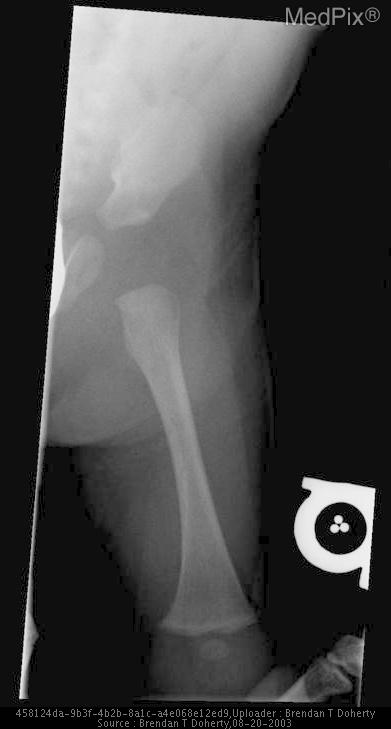Failure to thrive x ray
Jump to navigation
Jump to search
|
Failure to thrive Microchapters |
|
Diagnosis |
|---|
|
Treatment |
|
Case Studies |
|
Failure to thrive x ray On the Web |
|
American Roentgen Ray Society Images of Failure to thrive x ray |
|
Risk calculators and risk factors for Failure to thrive x ray |
Editor-In-Chief: C. Michael Gibson, M.S., M.D. [1]; Associate Editor(s)-in-Chief: Akash Daswaney, M.B.B.S[2]
Overview
X-rays are useful in diagnosing organic causes of failure to thrive.
X Ray
- X-rays are useful in diagnosing organic causes of failure to thrive.
- Listing down each organic cause is beyond the scope of this microchapter.
- Some examples are :
- Rickets
- Diffuse osteopenia in the diaphyses of the long bones.
- Widening and lengthening of the growth plates in the distal femur and proximal tibia.
- Irregular and indistinct ("fraying") metaphyseal margins of the distal femur and proximal tibia.
- Bowing of the femur and tibia.
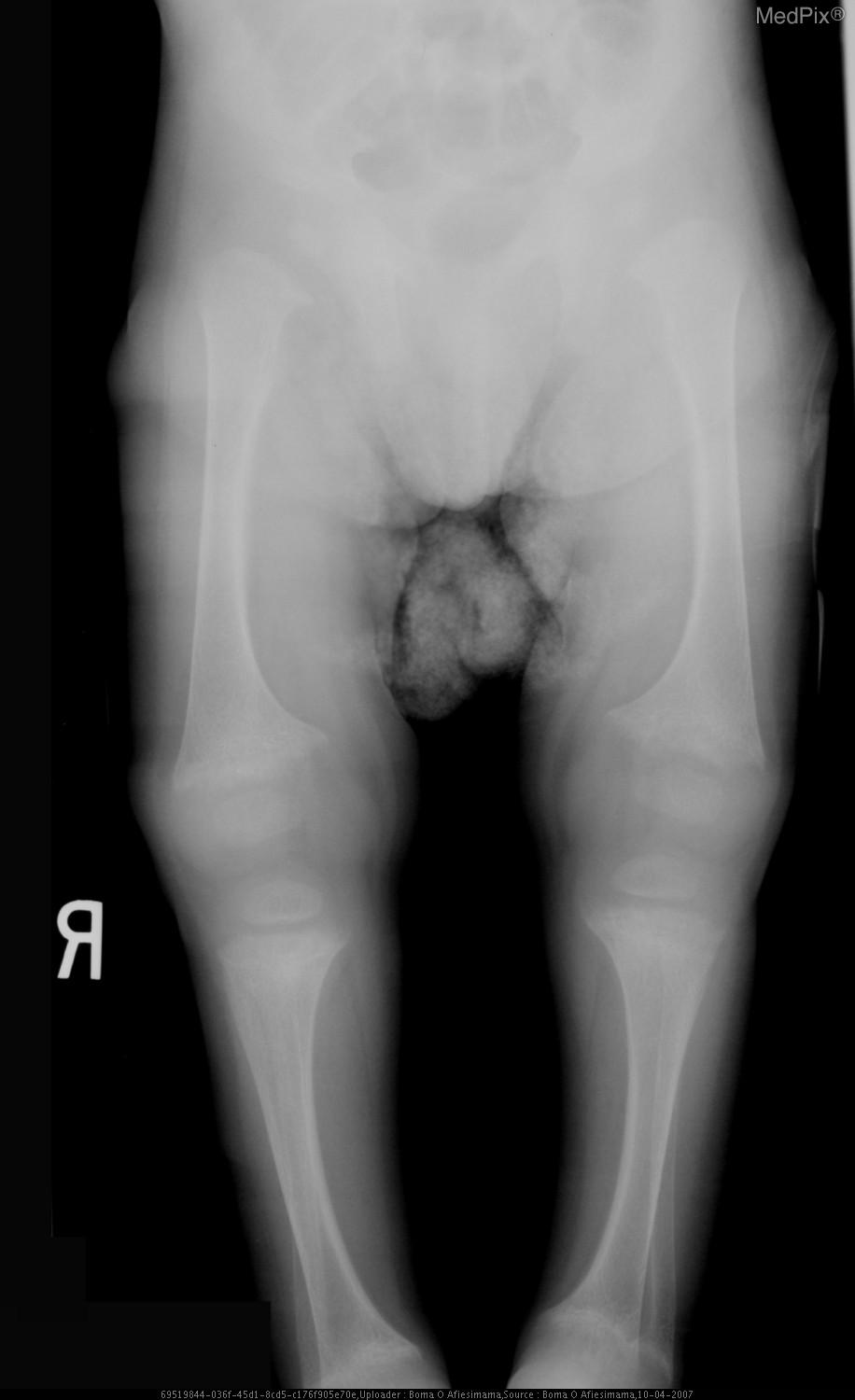
- Atrial Septum defect
- Chest x-ray of a child with an ostium secundum atrial septal defect showing right atrial enlargement, right ventricular enlargement and increased pulmonary vascular markings.
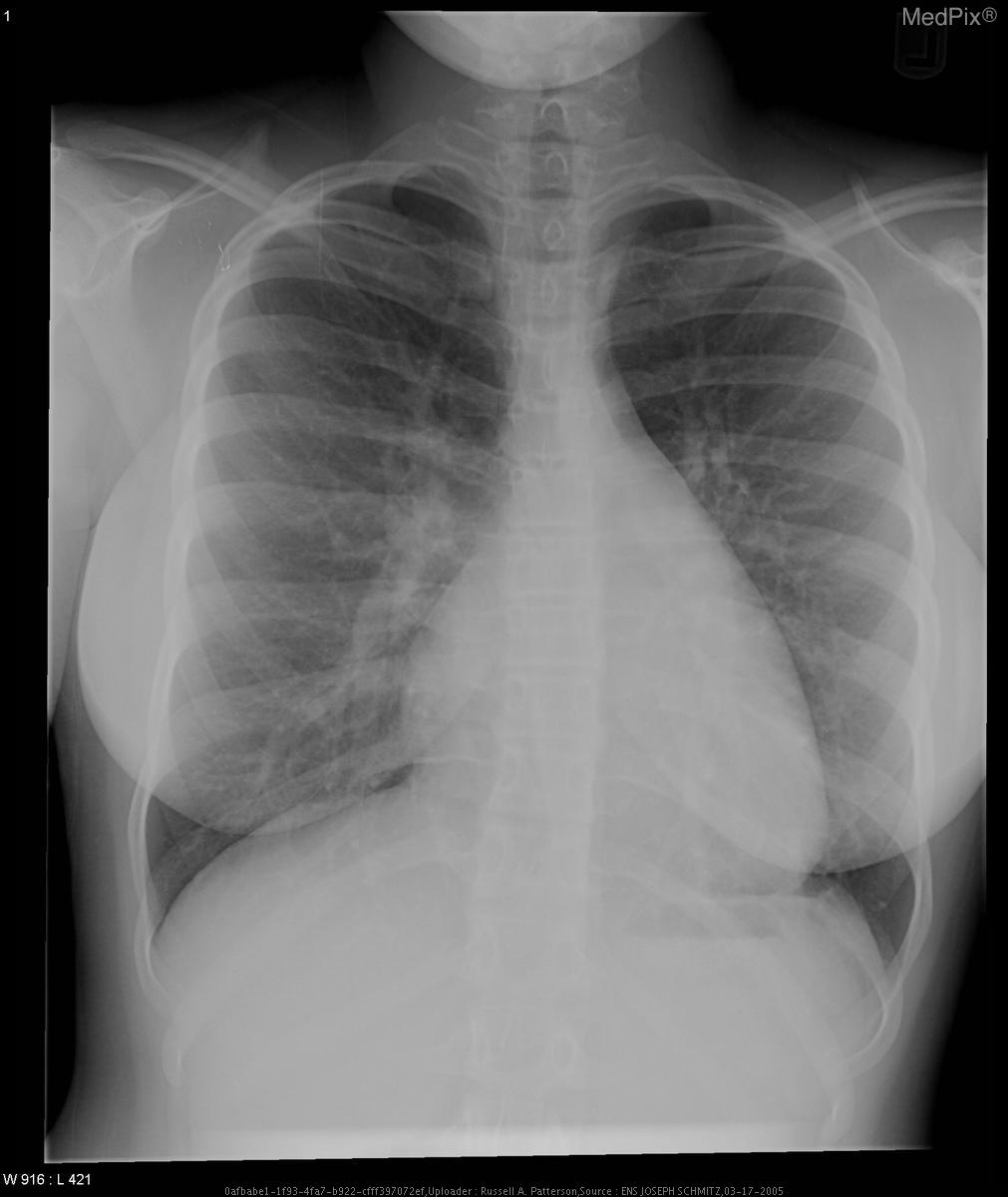
- Pneumatosis Intisinalis
- X-ray showing areas of pneumatosis in the stomach wall and dilated loops of bowel in the right lower quadrant. This should prompt a differential of necrotizing enterocolitis, gastric outlet obstruction, duodenal atresia, malrotation with volvulus or emphysematous gastroenteritis.
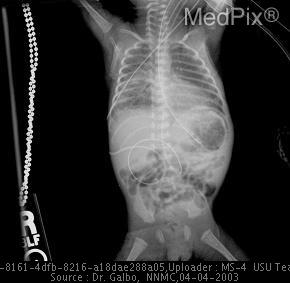
- Idiopathic pulmonary fibrosis
- Posterior-anterior x-ray film of a 6 year old child showing diffuse interstitial infiltrates secondary to idiopathic pulmonary fibrosis.
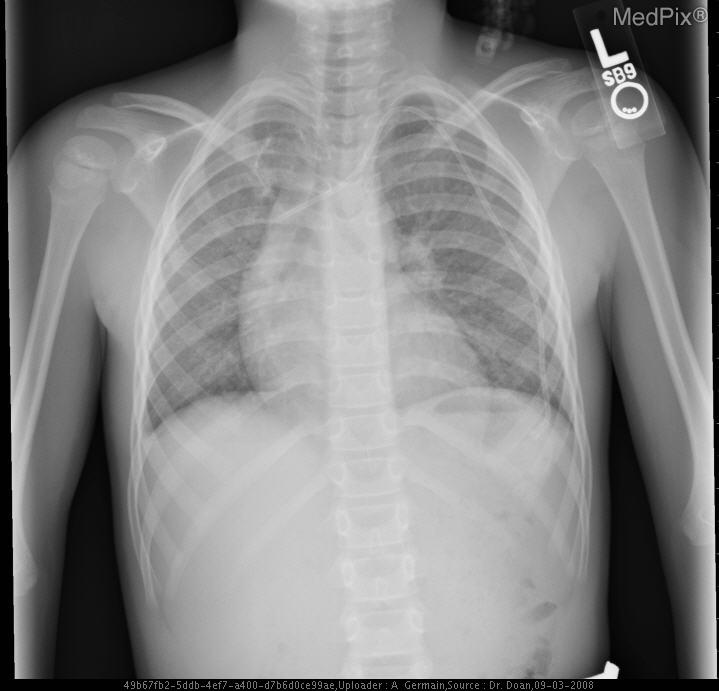
- Non Accidental Trauma
- An antero-posterior radiograph of the abdomen shows two pins in the duodenum and distal jejunum.
- An antero-posterior radiograph of the parapharyngeal and pharyngeal region shows multiple smaller pins.
- Such a radiograph should arouse suspicion for non-accidental trauma.
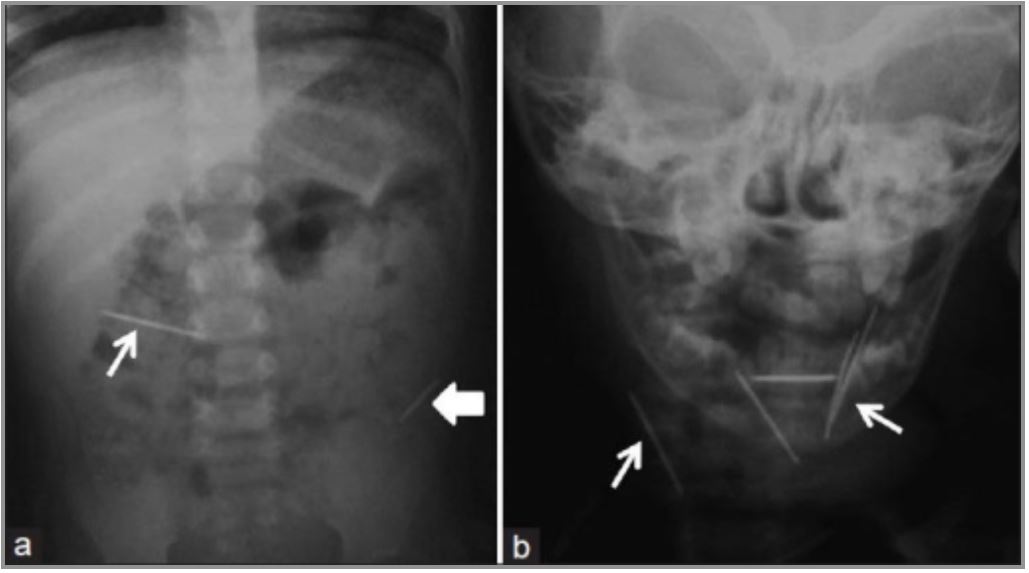
- Left femur, multiple metaphyseal lucencies show the characteristic "corner fracture"--thicker peripheral rim more readily visible and appearing as a triangular fragment, characteristic for non accidental trauma.
